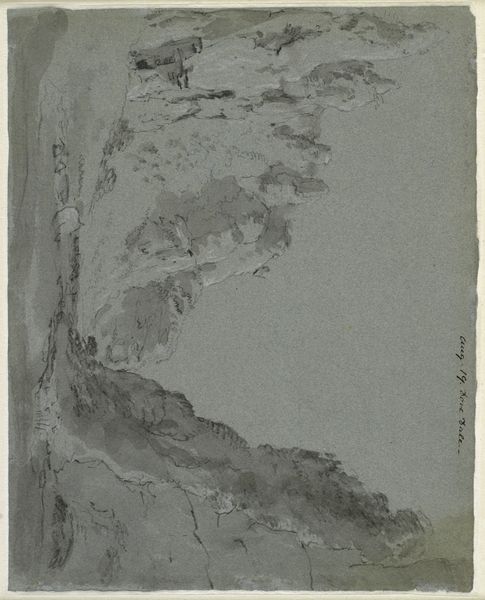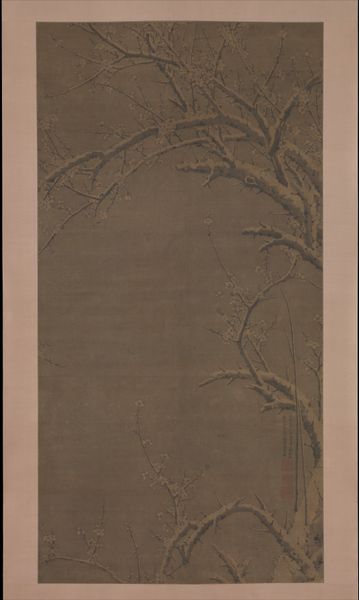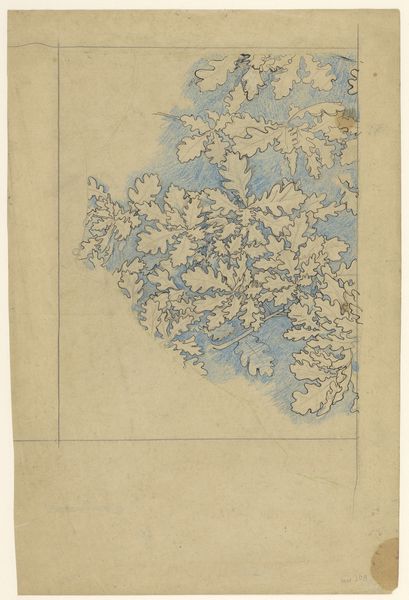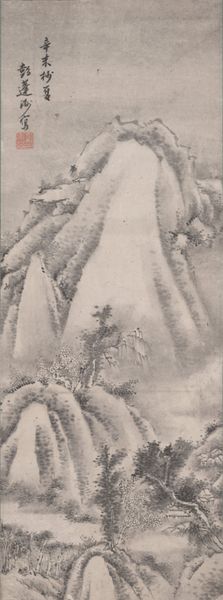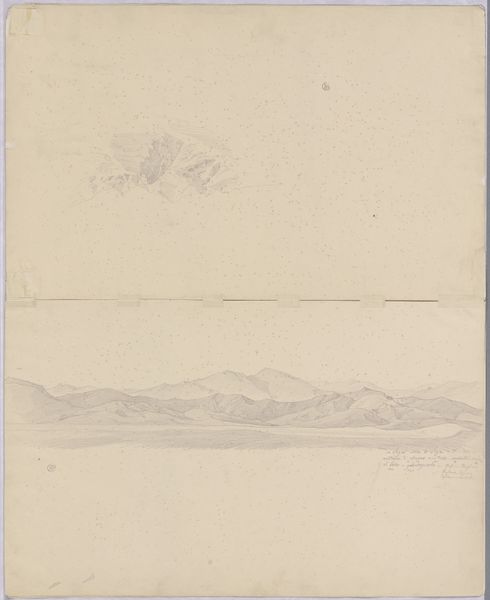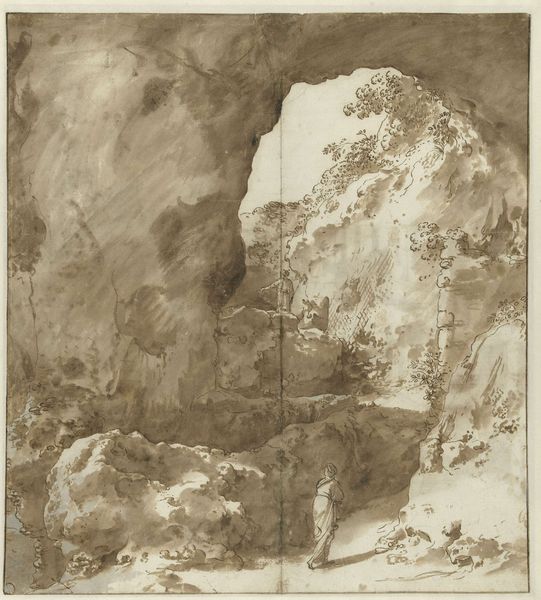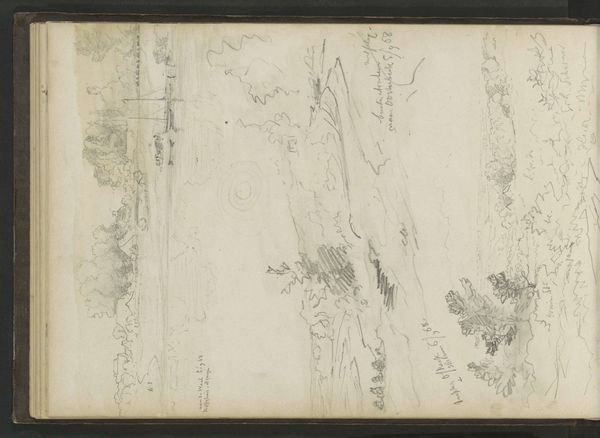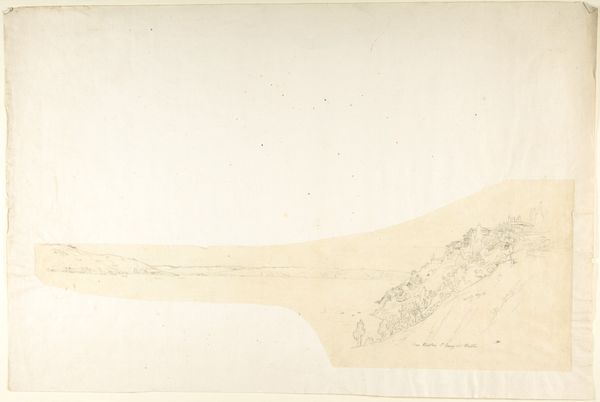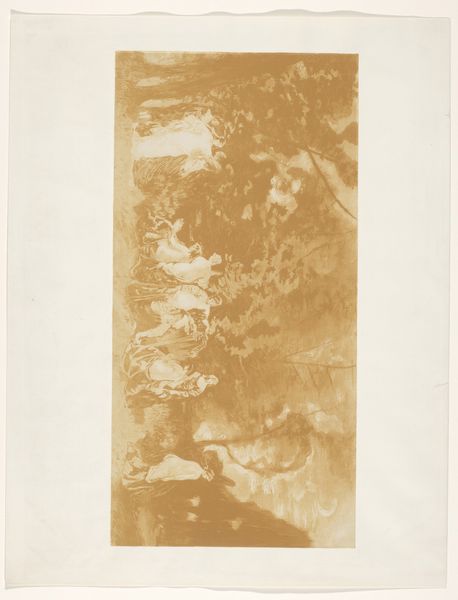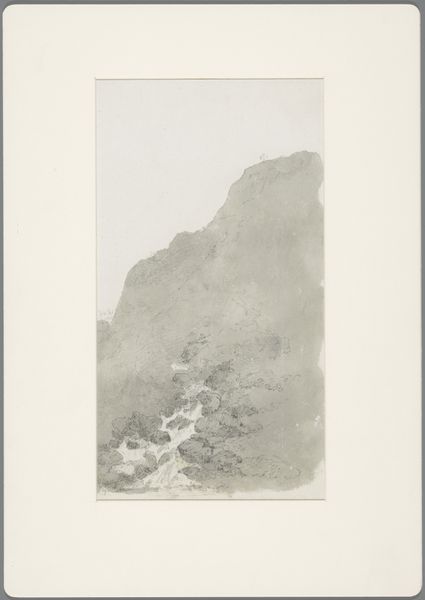
drawing, tempera, paper, ink, pencil
#
drawing
#
snow
#
aged paper
#
toned paper
#
tempera
#
light earthy tone
#
asian-art
#
landscape
#
japan
#
paper
#
tea stained
#
oil painting
#
ink
#
earthy tone
#
mountain
#
pencil
Dimensions: Image: 52 15/16 in. × 11 in. (134.5 × 27.9 cm) Overall with mounting: 81 7/8 × 16 3/16 in. (208 × 41.1 cm) Overall with knobs: 81 7/8 × 18 9/16 in. (208 × 47.1 cm)
Copyright: Public Domain
Editor: So, here we have "Brewing Tea in a Snow-Covered Hut" by Tani Buncho, dating from 1791. It’s done with ink, color, and probably tempera on paper, giving it these beautiful earthy tones. It's mostly grayscale. The whole piece feels…peaceful, serene even. What's your read on this artwork, in terms of its historical context? Curator: Well, thinking about its cultural environment, the late 18th century in Japan saw rising merchant power alongside a still-dominant samurai class. This piece, depicting a humble tea ceremony in a snowy landscape, reflects a certain romanticism of simpler life, maybe a quiet pushback against urban bustle. It connects to broader anxieties around societal shifts, wouldn't you agree? Where do you think this fits into ideas about public and private life? Editor: Hmm, that's interesting! So it’s not *just* about nature but about contrasting it with societal complexities. Maybe that snowy hut is an imagined escape for a society undergoing change? I wonder how widely accessible an artwork like this would have been at the time. Was this intended for private viewing by a wealthy patron, or was it exhibited more publicly? Curator: Precisely! The scale, its creation as a hanging scroll, implies a private setting, probably for a refined audience attuned to its subtleties and cultural codes. But, also consider the potential role of copying and circulation – how prints and imitations could extend its reach and impact in society. Does this circulation perhaps alter the image’s intended political meaning? Editor: That's fascinating – it almost creates a tension between the artwork's original intent and its wider reception, potentially shaping public perception over time. It sounds like there’s a whole chain of cultural significance tied to who *sees* and *interprets* the art. Curator: Exactly! By acknowledging that tension between the art and its public function, and how museums continue to perpetuate or disrupt them, can we enrich our understanding of artworks such as these. Editor: I've never thought of it that way before. Thanks, this conversation really opened my eyes.
Comments
No comments
Be the first to comment and join the conversation on the ultimate creative platform.


